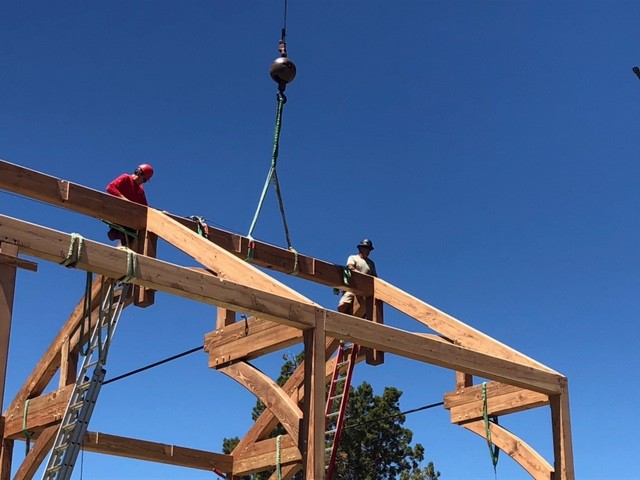We recently connected with Jonathan Orpin and have shared our conversation below.
Jonathan, appreciate you joining us today. Risk taking is a huge part of most people’s story but too often society overlooks those risks and only focuses on where you are today. Can you talk to us about a risk you’ve taken – it could be a big risk or a small one – but walk us through the backstory.
As a company founder/owner and longtime entrepreneur, I take risks every day. Years ago, a management book was circulating called The E Myth by Michael E. Gerber, whose premise was that entrepreneurs don’t actually take risks. My guess is that Mr. Gerber was not actually an entrepreneur himself.
As an example, here’s one of many: In 2006 I made the decision to move to the west coast with my family and one coworker, far from our home base in western New York, to start a sister organization, mimicking much (although not all) of the services we provide from our New York facility. The thinking was that as a company we would more easily be able to service the entire country, tap into the west coast love for wood-and-timber-intensive architectural style (for which we are known), and be right in the midst of big timber country, which we use, obviously. This would also enable us to best supply each coasts manufacturing efforts as well.
The risk, not insubstantial, is that the founder and president was leaving the main facility to start a similar one on the far coast basically from scratch. The risk paid off, we are now a bi-costal operation employing 130+ craftsmen and coworkers that are more than just employees, but co-owners as we have grown to become 100% employee owned as an ESOP.





Awesome – so before we get into the rest of our questions, can you briefly introduce yourself to our readers.
My name is Jonathan Orpin, and I started New Energy Works in the mid 1980’s, followed in the beginning of the 1990’s with Pioneer Millworks, and soon after that NEWwoodworks.
From our studio-shops and mills in New York and Oregon New Energy Works design, craft, and build sustainable custom timberframe homes, buildings, and high-performance enclosures throughout North America. Their sister company Pioneer Millworks manufacture reclaimed and sustainable wood flooring, paneling, siding, and decking for the building industry, and NEWwoodworks crafts custom fine woodworking.
Each time I added a new venture it was because we wanted to offer a fuller and more complete service to our clientele. This integration accomplished two major goals: to better express our design and craft vision and skills, and to make full use of the trust our clients give us, from a business standpoint.
All our business activity, from the start, has been rooted in the concept of the Triple Bottom Line, that as a business our mission is to give equal importance to People (all of them), the Planet (it’s the one we have) and Profit (without which we cannot continue).
What’s been the most effective strategy for growing your clientele?
All the basics like service, quality, and value. But add to that inspiration.
Year after year about 80% of our work comes from what we call our Goodwill Category. That is Referrals, Repeats, and Word of Mouth. For example, we’re currently building for the second generations of original clients, neighbors and friends, people who have heard of us through the grapevine, etc. Last week we raised a timber frame on Martha’s Vineyard that was our 7th project for the same architect.
As a business model we do what we say we will do and make it easy and fluid for our clients and partners. After that, we try to inspire. Too many people know more about their car than their house. We make sure that the details and extra value we offer is understood, so that this structure we are creating, that begins as just shelter, becomes the home or project the client has dreamed of.
This doesn’t mean that the remaining 20% of our projects are not critical, and these come from the internet leads and web presence, mostly. We try to share the story of who we are, and what we can do, and let folks decide if we’re worth the gamble of a phone call. This 20% of course leads into tomorrow’s Goodwill, feeding the cycle that allows our craftspeople to keep doing what they do best.





Let’s talk about resilience next – do you have a story you can share with us?
Resilience is as necessary, daily, as oxygen. A big one would be a continuation of the story about risk, and the move to the west coast. We made this move in 2008. You may recall this was the start of the Great Recession, caused by the collapse of the housing market. We made a commitment to not initiate layoffs, or cutback on salaries and benefits. We made work, we took whatever jobs we could find, we participated in shared work programs, and we all put our shoulders to the wheel. As the recession eased up, we were thus able to come out of it largely intact, and ready to get healthy again.
Contact Info:
- Website: NewEnergyWorks.com PioneerMillworks.com NEWwoodworks.com
- Instagram: https://www.instagram.com/newenergyworks/ https://www.instagram.com/pioneermillworks/ https://www.instagram.com/newwoodworks/
- Other: 585.924.3860 1180 Commercial Drive, Farmington, NY 14425 [email protected]


